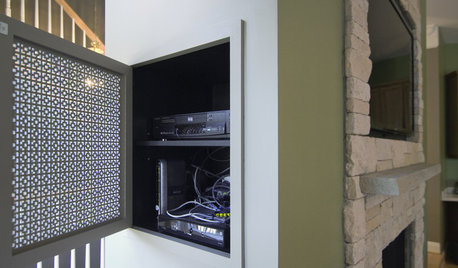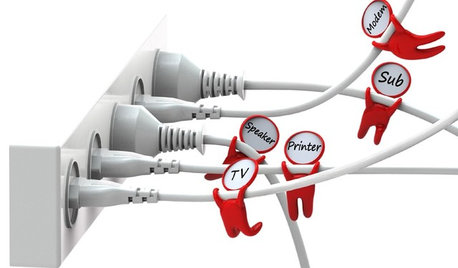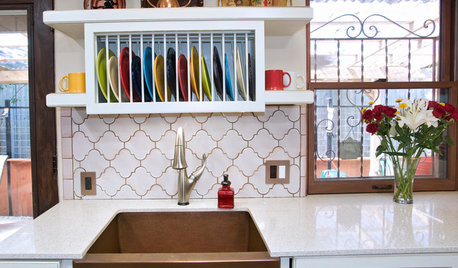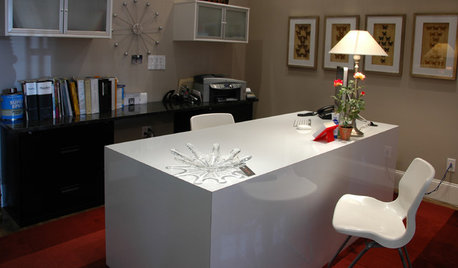cutting cable
ionized_gw
11 years ago
Related Stories

DECORATING GUIDESA Vote for the Cable Stitch in Home Decor
Warm Up a Room With the Look, Feel and Memories of Knitting
Full Story
DECORATING GUIDESHow to Hide Your TV Cables
Make your TV room clutter-free by hiding your electronics in the wall
Full Story
MORE ROOMSOn Trend: Smart Solutions for Cords
Show those cables and wires who's boss with these clever solutions for the home office
Full Story
HOUZZ TOURSHouzz Tour: A 'Portlandia' Home Raises an Eyebrow
Cable TV came calling for this quirky home in Oregon, and it played its spaceship part to a T
Full Story
COLORRunway to Room: Spring Fashion Pops Into the Home
From streaks of nude to shots of neon, color joins shimmer, menswear, cable knits and more in the spring 2012 runway collections
Full Story
EVENTSTile Goes High Tech at Italy's Big Expo
Cutting-edge methods are creating tile looks from handmade to avant-garde, as seen as CERSAIE 2013
Full Story
HOME TECHCook Smarter With New Wi-Fi Kitchen Gadgets
Whip up meals with high-tech help, thanks to a phone-connected oven and teakettle, plus a web-surfing cutting board
Full Story
KITCHEN DESIGNDish-Drying Racks That Don’t Hog Counter Space
Cleverly concealed in cabinets or mounted in or above the sink, these racks cut kitchen cleanup time without creating clutter
Full Story
HOME OFFICESExpert Talk: 11 Desk Designs That Really Work It
Boring or inadequate desks don't cut it for productivity in a home office. File these desk designs and expert insight under "To Do"
Full Story
LIFEYou Said It: ‘It’s Different ... But Then, Aren’t You?’ and More Wisdom
Highlights from the week include celebrating individuality and cutting ourselves some decorating slack
Full StoryMore Discussions








randy427
btharmy
Related Professionals
DeRidder General Contractors · Elmont General Contractors · Kentwood General Contractors · Miami Gardens General Contractors · Saint Andrews General Contractors · Signal Hill General Contractors · Springboro General Contractors · Lynwood Solar Energy Systems · Mesquite Solar Energy Systems · Norton Solar Energy Systems · Santa Maria Solar Energy Systems · Inver Grove Heights Solar Energy Systems · Verona Solar Energy Systems · Minnetonka Home Automation & Home Media · Pasadena Home Automation & Home Mediaionized_gwOriginal Author
Ron Natalie
ionized_gwOriginal Author
alan_s_thefirst
ionized_gwOriginal Author
kalining
ionized_gwOriginal Author
kalining
alan_s_thefirst
ionized_gwOriginal Author
ionized_gwOriginal Author
Ron Natalie
ionized_gwOriginal Author
ionized_gwOriginal Author
yosemitebill
weedmeister
ionized_gwOriginal Author
brickeyee
alan_s_thefirst
brickeyee
ionized_gwOriginal Author
saltcedar
yosemitebill
ionized_gwOriginal Author
brickeyee